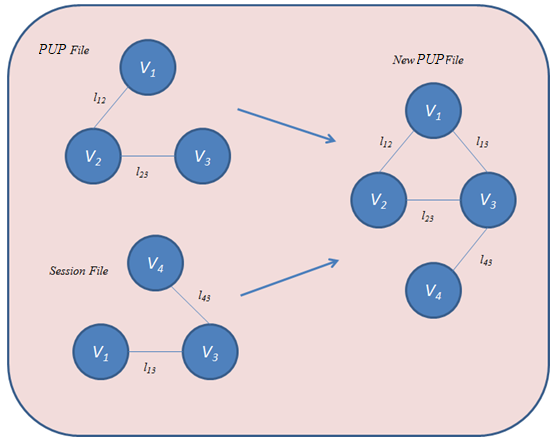Perception based User Profiles for Web Personalization
Main Article Content
Abstract
Personalized web services reduce the burden of information overload by collecting facts that match the needs of the user. An important aspect of personalized web services is the creation of user profiles that contain user information and settings. This article introduces a unique method called Perception-Based User Profiles (PUP) based on perception and browsing order, develops and updates user profiles. User profiles include perceptions and relationships, which can help guarantee that user interests are represented semantically. Second, when calculating the perception and duration of the relationship, for each site in a session, the user's browsing order is considered. Third, cognitive psychometric memory model is used to update the user profile's perceptions and relationships at the end of each session, ensuring the user profile's dynamics. The results of the tests suggest that this strategy works well for building and updating user profiles.
Article Details
References
X. Li, S. K.Chang. A Personalized E-Learning System Based on User Profile Constructed Using Information Fusion. In Proceedings of the 11th International Conference on Distributed Multimedia Systems, Banff, Canada,2005, pp.109-114
Ushasree, D., Krishna, A. V. P. ., Rao, C. . M. ., & Parameswari, D. V. L. . (2023). SPE: Ensemble Hybrid Machine Learning Model for Efficient Diagnosis of Brain Stroke towards Clinical Decision Support System (CDSS). International Journal of Intelligent Systems and Applications in Engineering, 11(1), 339–347. Retrieved from https://ijisae.org/index.php/IJISAE/article/view/2544
F. Lu, X. Li, Q. T. Liu. Research on Personalized E-Learning System Using Fuzzy Set Based Clustering Algorithm. Lecture Notes in Computer Science. Springer Berlin, Heidelberg 2007.
B.Mobasher, H.Dai, T. Luo, Y.Q. Sun. Integrating Web Usage and Content Mining for More Effective Personalization. In Proceedings of the 1st International Conference on Electronic Commerce and Web Technologies, London, UK, 2000, pp. 165 - 176.
F. Qiu, J. Cho. Automatic Identification of User Interest for Personalized Search. In Proceedings of the 15thinternational conference on World Wide Web, Edinburgh Scotland, 2006, pp. 727 – 736.
A. Sieg, B. Mobasher, R.Burke. Ontological User Profiles for Representing Context in Web Search. InProceedings of the 2007 IEEE/WIC/ACM International Conferences on Web Intelligence and Intelligent Agent Technology, Silicon Valley, USA, 2007 pp. 91- 94.
Ms. Pooja Sahu. (2015). Automatic Speech Recognition in Mobile Customer Care Service. International Journal of New Practices in Management and Engineering, 4(01), 07 - 11. Retrieved from http://ijnpme.org/index.php/IJNPME/article/view/34
L. Chen, K. Sycara. WebMate: Personal Agent for Browsing and Searching. In Proceedings of the 2ndInternational Conference on Autonomous Agents, Minneapolis, USA, 1998, pp. 132-139.
S. Singh, M. Sarabdeep, J. Duffy. An Adaptive User Profile for Filtering News Based on a User Interest Hierarchy.In Grove, Andrew, Eds. Proceedings 69th Annual Meeting of the American Society for Information Science and Technology, Austin, USA, 2006.
J. Carroll, M. Rosson. The Paradox of the Active User. Interfacing Thought: Cognitive Aspects of Human- Computer Interaction, 1987, pp.80 – 111.
Rossi, G., Nowak, K., Nielsen, M., García, A., & Silva, J. Enhancing Collaborative Learning in Engineering Education with Machine Learning. Kuwait Journal of Machine Learning, 1(2). Retrieved from http://kuwaitjournals.com/index.php/kjml/article/view/119
P. Hansen, K.Järvelin. The information seeking and retrieval process at the Swedish patent and registration office. Moving from lab-based to real life work-task environment. Proceedings of the ACM SIGIR 2000 Workshop on Patent Retrieval, 2000, pp.44–53.
J. Yu, et al. Building Search Context with Sliding Window for Information Seeking. Proceedings of 2011 IEEE 3rd International Conference on Computer Research and Development, 274-277.
Shanthi, D. N. ., & J, S. . (2021). Machine Learning Architecture in Soft Sensor for Manufacturing Control and Monitoring System Based on Data Classification. Research Journal of Computer Systems and Engineering, 2(2), 01:05. Retrieved from https://technicaljournals.org/RJCSE/index.php/journal/article/view/24
D. Bollegala, et al. Measuring Semantic Similarity between Words Using Web Search Engines, In Proceedings of the 16th international conference on World Wide Web, 2007, pp.757–786.
I. Neath, G. D. A. Brown. SIMPLE: Further Applications of a Local Distinctiveness Model of Memory. Psychology of Learning and Motivation, Vol.46 . pp. 201-243. ISSN 0079-7421.
Juan Lopez, Machine Learning-based Recommender Systems for E-commerce , Machine Learning Applications Conference Proceedings, Vol 2 2022.

